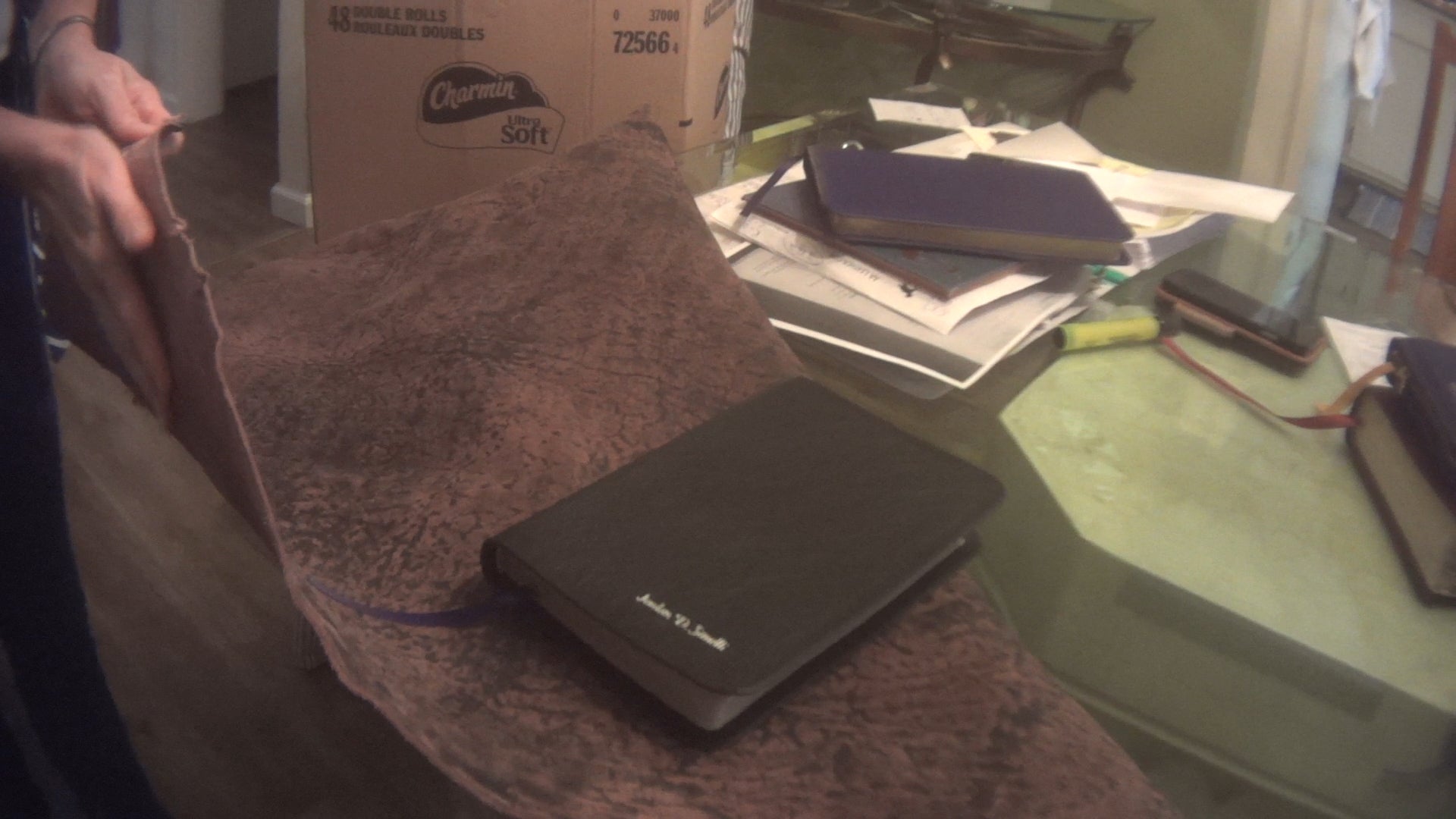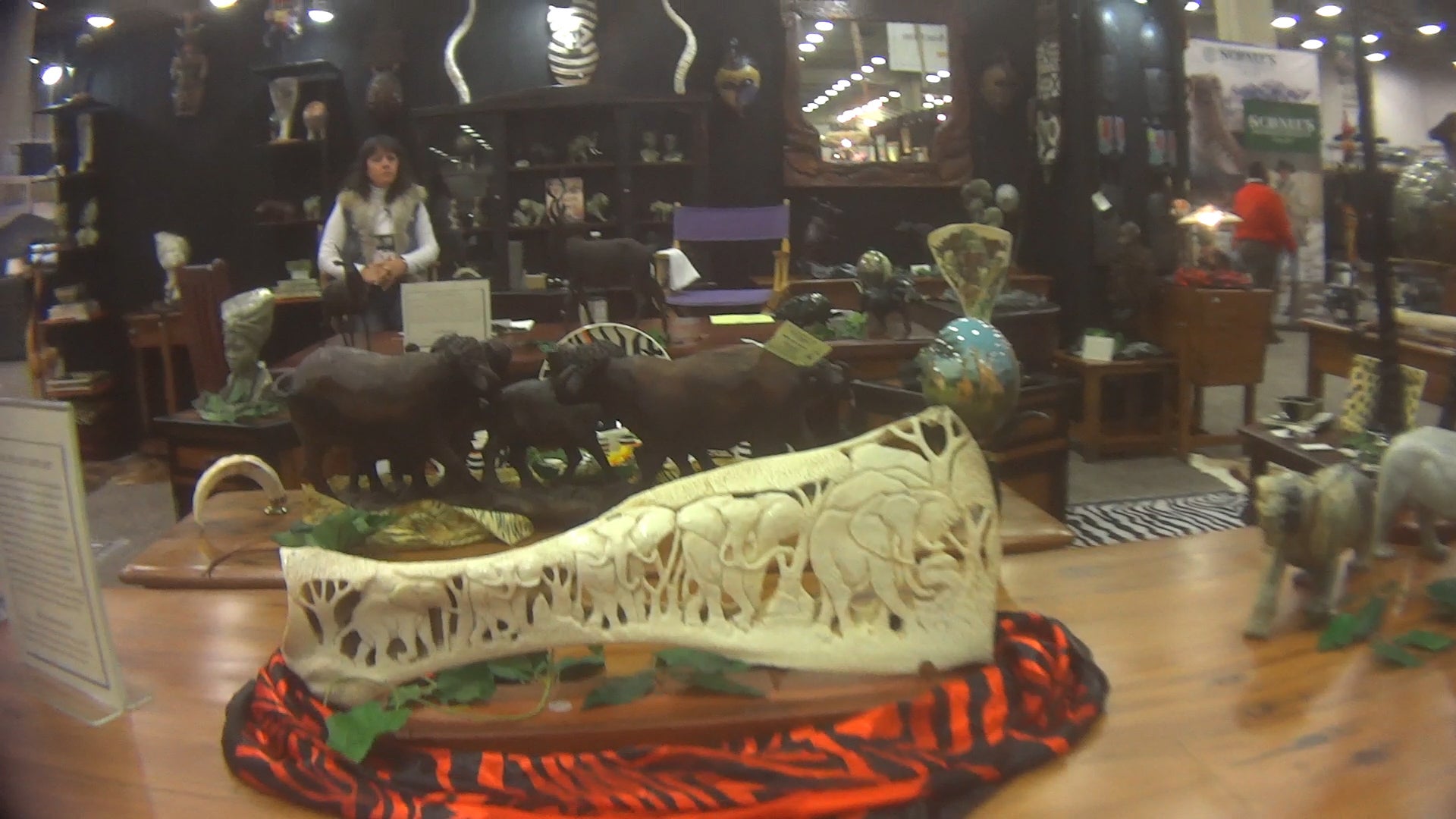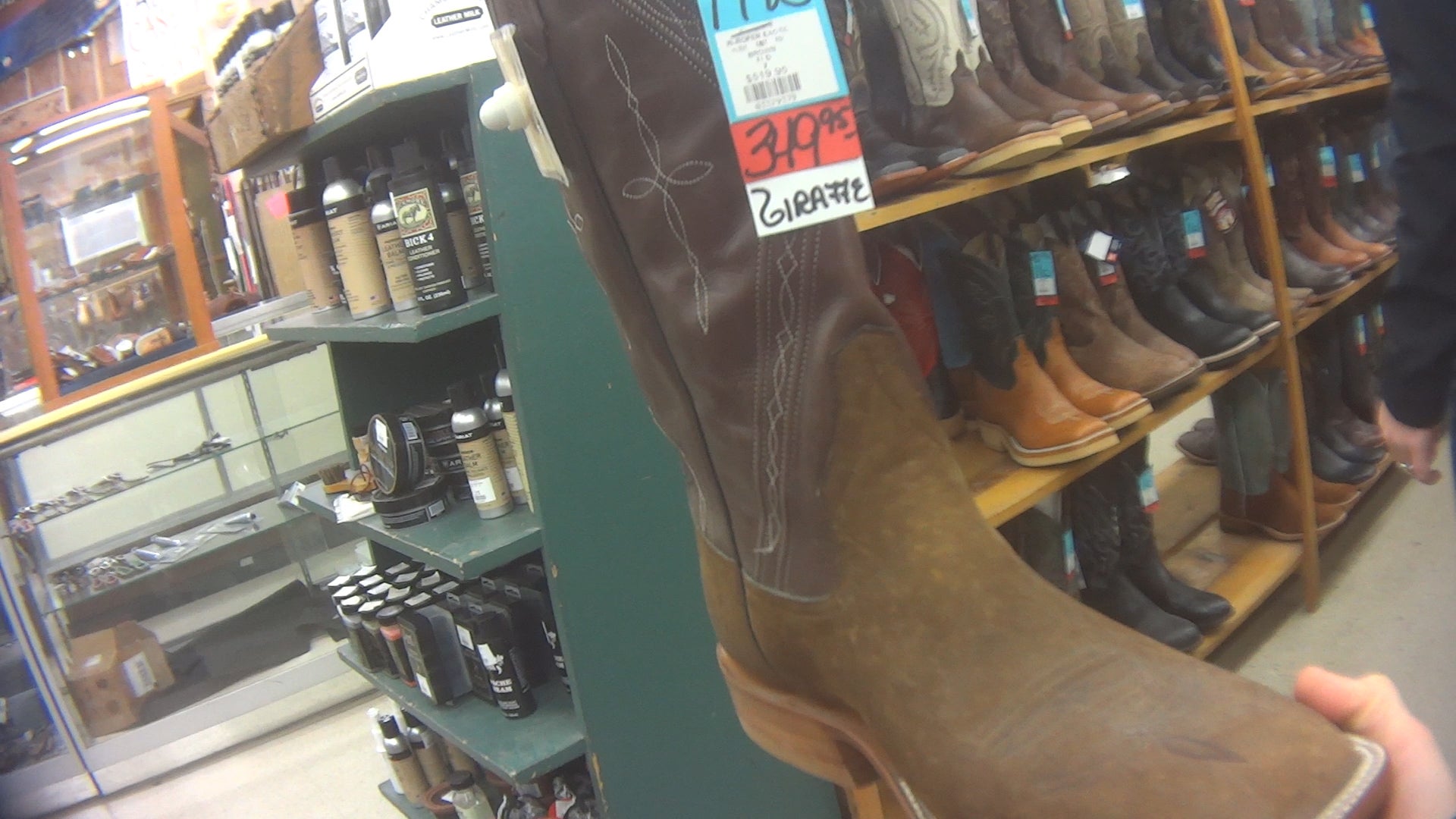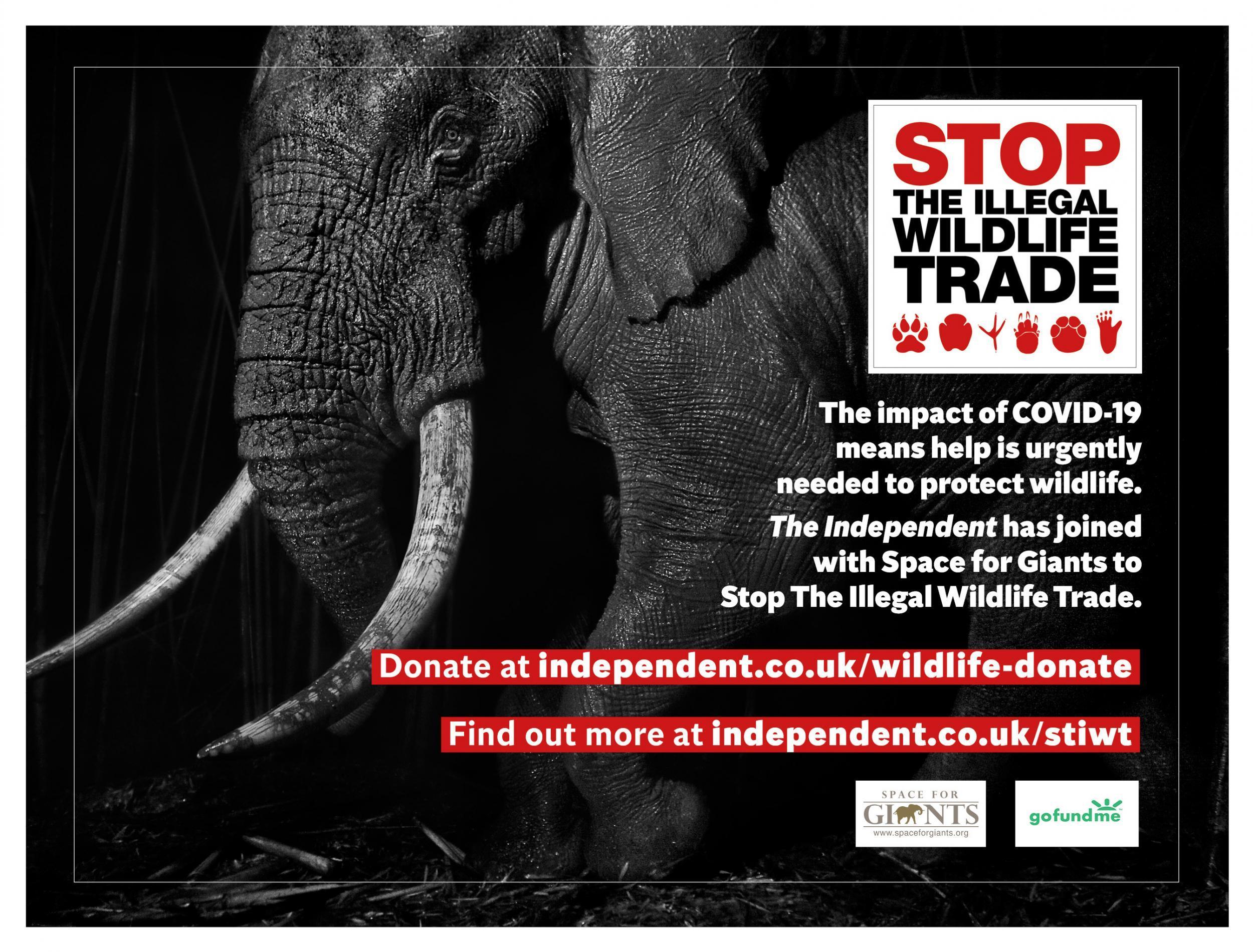Bibles, bar stools and cowboy boots: How the US market in giraffe products is driving their ‘silent extinction’
We are working with conservation charity Space for Giants to protect wildlife at risk from poachers due to the conservation funding crisis caused by Covid-19. Help is desperately needed to support wildlife rangers, local communities and law enforcement personnel to prevent wildlife crime. Donate to help Stop the Illegal Wildlife Trade here
Your support helps us to tell the story
From reproductive rights to climate change to Big Tech, The Independent is on the ground when the story is developing. Whether it's investigating the financials of Elon Musk's pro-Trump PAC or producing our latest documentary, 'The A Word', which shines a light on the American women fighting for reproductive rights, we know how important it is to parse out the facts from the messaging.
At such a critical moment in US history, we need reporters on the ground. Your donation allows us to keep sending journalists to speak to both sides of the story.
The Independent is trusted by Americans across the entire political spectrum. And unlike many other quality news outlets, we choose not to lock Americans out of our reporting and analysis with paywalls. We believe quality journalism should be available to everyone, paid for by those who can afford it.
Your support makes all the difference.Towering over every living creature on earth, it would be easy to think that the giraffe’s iconic stature is reflected in its ubiquity.
But the reality is bleak: In the past four decades, giraffe populations have declined 40 per cent, leaving 68,293 mature giraffes in the wild according to the International Union for Conservation of Nature (IUCN) Red List which tracks the planet’s most at-risk species.
In 2010, some 800,000 of the much-loved, “Sophie the Giraffe” teething toy were sold in France - more than eight times the number of living giraffes across Africa, according to one study.
The fact that this has happened largely unnoticed, led conservationists to dub it a "silent extinction".
Until last year, there were no regulations overseeing the international trade in giraffes. It made the species an easier target than other charismatic species, like rhinos and elephants, which are subject to tighter restrictions.
The role that both the legal and illegal wildlife trade has played in giraffes' dwindling numbers is difficult to assess as research on the species across their African habitats has been limited, IUCN noted.
Our Stop The Illegal Wildlife Trade campaign, launched by The Independent's largest shareholder Evgeny Lebedev, is calling for an international effort to clamp down on the illegal trade of wild animals, which remains one of the greatest threats to future biodiversity.

David O’Connor, president of Save Giraffes Now, told The Independent earlier this month that conservation projects for giraffes are several decades behind other at-risk species. In fact, the discovery that there are four distinct species was made just four years ago.
What is clear is the demand in the US market for giraffe products. A 2018 investigation, by Humane Society International (HSI), found that 40,000 giraffe parts were imported into the US from Africa between 2006-2015. Among these were 3,700 hundred trophies, equivalent to one a day.
The undercover operation came across giraffe skin bible covers for sale in North Carolina, cowboy boots in Texas and throw pillows in Florida.
A stuffed baby giraffe was being offered for $8,000 while a hide-covered bar stool had a $1,500 price tag, according to the report. The most commonly imported item were found to be giraffe bones, used in knife handles, pistol grips and ornamental carvings.
The investigation also found that three sellers of giraffe parts had previously been convicted of rhino horn trafficking or other wildlife crimes.

Adam Peyman, programs and operations manager of HSI's wildlife department, told The Independent that the import market for giraffes in the US was “robust” as the species were not protected by the Convention on International Trade in Endangered Species (CITES) until 2019.
“It was easier to import giraffe skins, bones and trophies than an elephant, for example, because they weren’t CITES-listed,” he said. “One vendor of giraffe skins basically confirmed this during our investigation. He said it was hard to import elephant products, so giraffes were this ‘new exotic’ to replace a strictly-regulated species.”
He added: “You don’t need a giraffe-bone knife handle if it's threatening the continued survival of this iconic species."
In 2016, IUCN declared the giraffe “vulnerable to extinction”. Of the nine giraffe subspecies, two are listed as "critically endangered".
The Kordofan subspecies, which inhabits Central Africa, have lost 90 per cent of its population in the past 40 years. Just 2,000 of this giraffe are left in the wild.

The Nubian giraffe, which once roamed across Northeast Africa, is now largely extinct in much of its historic range. It has lost 98 per cent of its population - leaving just 455 in the wild - and lives only on protected lands in Kenya.
Paul Todd, senior staff attorney of the nature program at the National Resources Defense Council (NRDC), told The Independent: “It’s our opinion that trophy hunting, and the legalised take of species that are endangered, are just going to exacerbate the decline. In other words, giraffes are endangered for a reason."
In the wild, giraffes face a myriad of threats. The species are at risk from habitat loss and degradation due to land clearance for agriculture; growing human populations and the complex impacts of the climate crisis. Close proximity to domestic livestock can also result in the transmission of diseases to giraffes.
The species have been caught in the cross-hairs of war and civil unrest in regions of central and east Africa. Others have fallen victim to poaching, both for bushmeat in local markets, and to be carved up and trafficked in the illegal wildlife trade.
The alarming reduction in giraffe numbers led to countries who are party to the CITES treaty to enhance protections for giraffes last year. It means that while international trade in giraffes is still allowed, countries must apply restrictions to try to curb the decline in population numbers.

Although the US supported the CITES rule change, the domestic Endangered Species Act (ESA) administered by the Fish and Wildlife Service (FWS), does not protect giraffes.
In 2017, NRDC, HSI, the Center for Biological Diversity (CBD) and the International Fund for Animal Welfare, petitioned FWS to list giraffes under the act.
Despite having 90 days to make a finding, the conservation groups were finally informed after two years (and a lawsuit) by FWS that their petition “presented substantial information on potential threats” showing that the listing "may be warranted”.
FWS confirmed to The Independent that the giraffe’s status is still “under review”.
“Given what’s happening with the species, we don’t see how [FWS] could find that it’s not warranted. They are endangered and declining,” Mr Todd said.
However a 12-month finding will not take place until 2025, according to records.
Last year, the Trump administration took significant steps to weaken the legislation to protect threatened species. Among the changes was a ban on designating critical habitat for species threatened by the climate crisis, according to CBD.
Mr Peyman said: “If giraffes were listed as endangered under the ESA, it would set a much higher bar for importing.
"Because its so clear that the US is a major market for giraffe products it’s very important that this species, which is really in trouble, be offered as high a protection as other similarly imperilled species."

Join our commenting forum
Join thought-provoking conversations, follow other Independent readers and see their replies
Comments